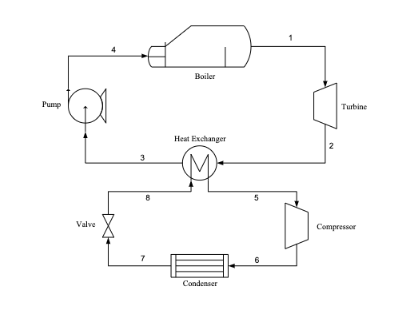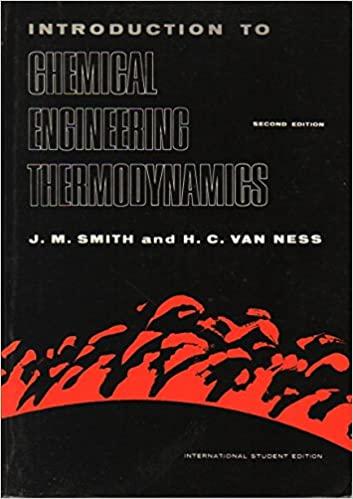Question
2. A Rankine cycle, as depicted in the figure below, is operated with a boiler, a turbine, a pump and a heat exchanger, which replaces
2. A Rankine cycle, as depicted in the figure below, is operated with a boiler, a turbine, a pump and a heat exchanger, which replaces the condenser. This power cycle is coupled to a refrigeration cycle where the heat exchanger is used as an evaporator and uses a compressor, a condenser and a throttling valve. Stream 1 is steam at 440 C and 40 bar with a mass flow rate of 1250 kg/h. The turbine and pump may be assumed to be ideal and streams 2 and 3 are saturated vapor and liquid, respectively. The working fluids for the refrigeration cycle is ammonia. It is evaporated from saturated liquid (stream 8) to saturated vapor (stream 5) in the heat exchanger at 2 bar. Then, stream 5 passes through the compressor ( = 0.8) until it reaches 30 bar (stream 6). Finally, the ammonia is condensed at 30 bar and its pressure is reduced with a throttling valve. Using the steam tables and the pressure-enthalpy diagram for ammonia, calculate for the power cycle: Temperature and pressure of streams 2 and 3 and 4 (C). (C pL (H 2 O) = 4.29 kJ/kg/K) ! of the turbine and pump (kJ/h). in the boiler and the heat exchanger (kJ/h). Efficiency of the cycle. For the refrigeration cycle, calculate: Mass flow rate of ammonia (kg/h). !(actual) of the compressor (kJ/h) and in the condenser (kJ/h). COP of the cycle. Show the stream points in the P-H diagram.

Step by Step Solution
There are 3 Steps involved in it
Step: 1

Get Instant Access to Expert-Tailored Solutions
See step-by-step solutions with expert insights and AI powered tools for academic success
Step: 2

Step: 3

Ace Your Homework with AI
Get the answers you need in no time with our AI-driven, step-by-step assistance
Get Started


